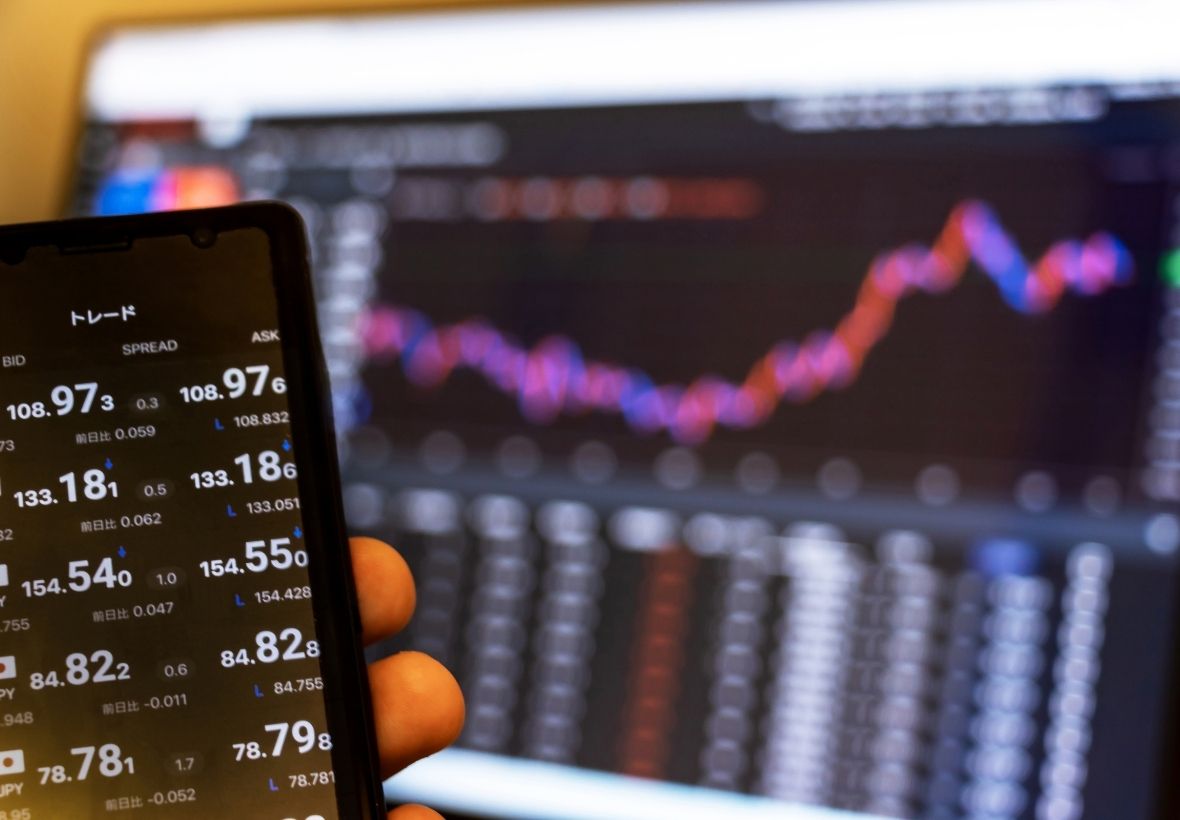Welcome to our comprehensive guide on how to create an option trading bot. In today’s fast-paced financial markets, automation has become increasingly popular, allowing traders to execute trades efficiently and effectively. An option trading bot is a powerful tool that can automate your trading strategies, saving you time and improving your overall trading performance.
In this article, we will provide you with a step-by-step guide on creating your own option trading bot. Whether you’re a beginner or an experienced trader, this guide will equip you with the necessary knowledge and resources to build a successful automated trading system. So let’s dive in and explore the exciting world of option trading bots!
1. Understanding Option Trading Bots
Option trading bots, also known as automated trading systems or algorithmic trading bots, are software programs that automatically execute trades based on predefined trading strategies. These bots analyze market data, identify trading opportunities, and place orders without human intervention. By leveraging advanced algorithms and trading indicators, option trading bots aim to generate profits while minimizing risks.
2. Choosing the Right Programming Language
To build an option trading bot, you need to choose a programming language that offers the necessary tools and libraries for interacting with financial markets and implementing trading strategies. Here are some popular programming languages for algorithmic trading:
Python
Python is widely used in the finance industry due to its simplicity, extensive libraries, and community support. It offers powerful libraries such as Pandas, NumPy, and Matplotlib, which are essential for data analysis and visualization.
JavaScript
JavaScript is a versatile language that can be used for both web development and algorithmic trading. It is commonly used for building trading bots that execute trades directly from web browsers.
C++
C++ is a high-performance language that is often used for developing complex trading systems. It provides low-level control and efficient memory management, making it suitable for high-frequency trading strategies.
R
R is a statistical programming language commonly used in quantitative finance. It offers a wide range of statistical and econometric libraries that can be leveraged for developing trading strategies.
3. Setting Up the Development Environment
Before you start coding your option trading bot, you need to set up your development environment. Here are the essential steps:
1. Install an integrated development environment (IDE) or a code editor for writing and managing your code efficiently. Popular choices include Visual Studio Code, PyCharm, and Sublime Text.
2. Set up a virtual environment to isolate your project’s dependencies and prevent conflicts between different Python libraries.
3. Install the necessary Python libraries for interacting with financial markets, such as pandas, numpy, matplotlib, and requests.
4. Designing Your Trading Strategy
The success of your option trading bot depends on the design of your trading strategy. A well-designed strategy takes into account technical and fundamental analysis, as well as proper risk management. Here are the key steps in designing your trading strategy:
1. Perform technical analysis: Analyze historical price data and identify patterns, trends, and key support and resistance levels using technical indicators.
2. Conduct fundamental analysis: Consider relevant financial news, economic indicators, and company-specific information to identify potential trading opportunities.
3. Define your risk management rules: Determine the maximum acceptable risk per trade, set stop-loss and take-profit levels, and establish position sizing guidelines.
5. Implementing Trade Execution Logic
In order to successfully implement trade execution logic in your option trading bot, there are several key considerations to keep in mind. This section will explore these considerations and provide guidance on how to effectively execute trades.
|
Step |
Description |
|
1. Define Trading Rules |
Determine the specific conditions under which your bot will execute trades. This may include factors such as price movements, technical indicators, or other market signals. |
|
2. Connect to an Exchange |
Establish a connection to a reliable and secure options trading exchange. This connection will allow your bot to access real-time market data and place trades. |
|
3. Retrieve Market Data |
Retrieve the necessary market data for making informed trading decisions. This may include data on option prices, bid/ask spreads, and trading volumes. |
|
4. Analyze Market Data |
Analyze the retrieved market data using your predefined trading rules. Identify potential trading opportunities based on your bot’s strategy and risk tolerance. |
|
5. Generate Trade Orders |
Once a trading opportunity is identified, generate the appropriate trade orders based on your bot’s logic. This may include placing market orders, limit orders, or stop orders. |
|
6. Implement Risk Management |
Incorporate risk management techniques into your trade execution logic. Set stop-loss orders or implement position sizing strategies to manage risk and protect your trading capital. |
|
7. Test Trade Execution |
Before deploying your bot for live trading, thoroughly test the trade execution logic in a simulated environment. This will help ensure that the bot executes trades accurately and according to your expectations. |
|
8. Monitor Trade Execution |
Continuously monitor the execution of trades in real-time. Keep track of filled orders, open positions, and account balances to stay informed about the performance of your bot. |
|
9. Handle Trade Exceptions |
Implement error handling mechanisms to address potential trade execution exceptions. This may include handling order rejections, partial fills, or connection issues with the trading exchange. |
|
10. Regularly Evaluate Performance |
Regularly evaluate the performance of your trade execution logic. Analyze key performance metrics such as profitability, trade success rate, and average trade duration. Make adjustments and refinements as necessary to improve performance. |
Implementing trade execution logic is a critical aspect of building a successful option trading bot. By following the steps outlined in the table above, you can ensure that your bot is equipped to execute trades accurately and in line with your trading strategy.
Remember to thoroughly test your trade execution logic in simulated trading environments before deploying it for live trading. This will help identify any potential issues or bugs and allow you to fine-tune your bot’s performance.
Keep monitoring the execution of trades and regularly evaluate the performance of your bot to make ongoing improvements. With proper trade execution logic in place, your option trading bot will be well-positioned to take advantage of trading opportunities and enhance your trading success.
Frequently Asked Questions (FAQs)
Q: Can I build an option trading bot without programming knowledge?
A: Building an option trading bot typically requires programming knowledge. However, there are user-friendly platforms and tools available that offer a visual interface for creating trading bots without extensive programming skills.
Q: How much capital do I need to start trading with a bot?
A: The required capital for trading with a bot depends on various factors, such as your trading strategy, risk tolerance, and the markets you’re trading. It’s recommended to start with a capital amount you can afford to lose and gradually increase it as you gain experience and confidence in your trading bot.
Q: Are option trading bots profitable?
A: Option trading bots can be profitable if they are based on well-designed and thoroughly tested trading strategies. However, it’s important to note that no trading strategy or bot guarantees profits, as the financial markets are inherently unpredictable.
Q: Can I use an option trading bot for other financial instruments besides options?
A: Yes, option trading bots can be adapted to trade other financial instruments such as stocks, futures, or cryptocurrencies. The underlying principles of algorithmic trading can be applied to various markets.
Q: Is it legal to use option trading bots?
A: The legality of using option trading bots depends on the regulations in your jurisdiction. It’s important to comply with applicable laws and seek legal advice if necessary.
Q: What are the risks of using an option trading bot?
A: Some risks of using option trading bots include technical failures, programming errors, connectivity issues, and market volatility. It’s important to implement proper risk management measures and monitor your bot’s performance closely.
In conclusion, creating an option trading bot can be a rewarding endeavor that empowers you to automate your trading strategies and make data-driven trading decisions. By following the steps outlined in this comprehensive guide, you can embark on your journey to build a successful option trading bot.
Remember that building a profitable bot requires a combination of technical skills, domain knowledge, and continuous learning. Keep refining your trading strategies, adapting to market conditions, and staying updated with the latest developments in algorithmic trading. Happy coding and happy trading!





Leave a Reply